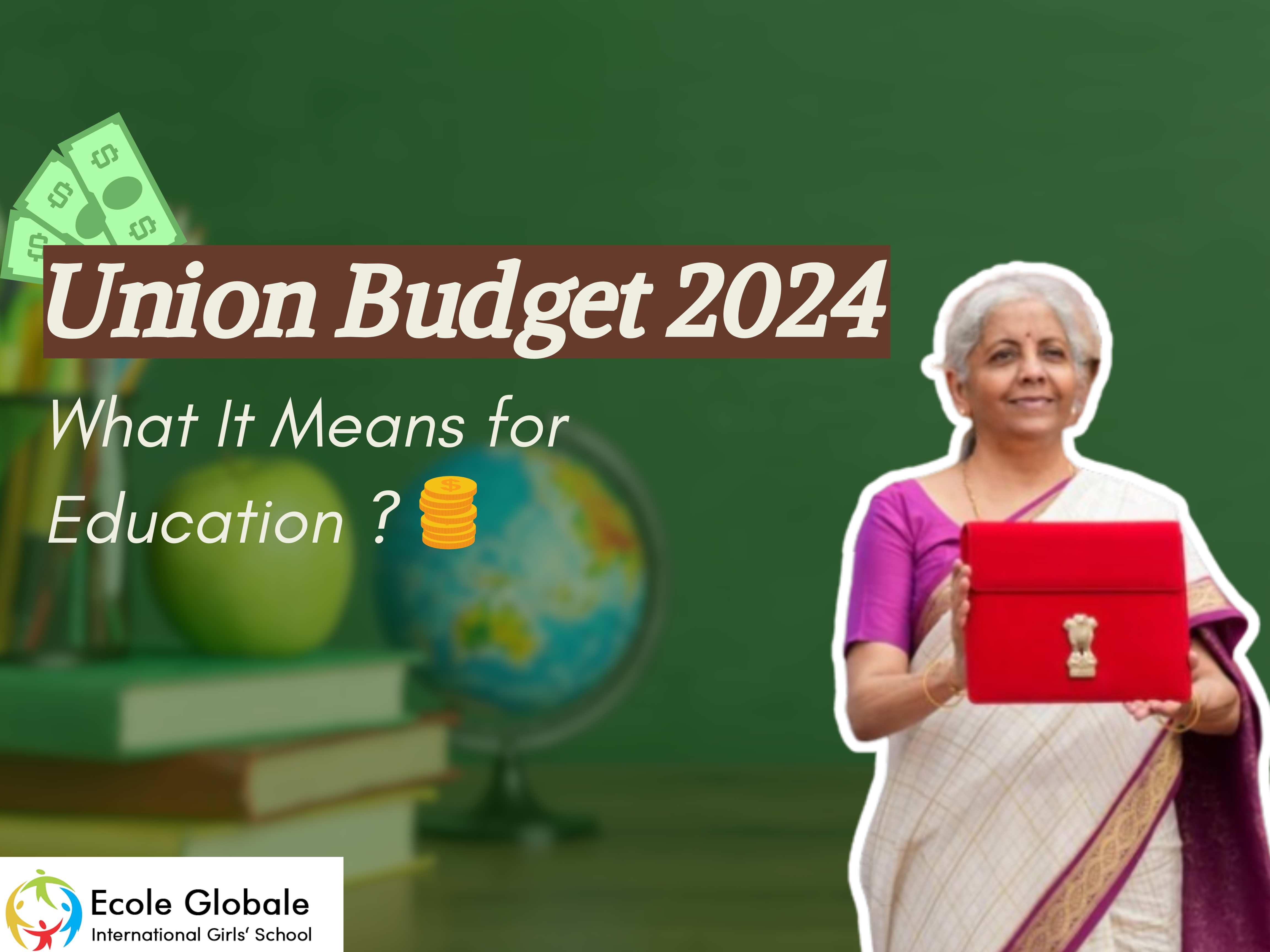The Union Budget 2024-25, presented by Finance Minister Nirmala Sitharaman, has allocated a significant portion of the education budget to the education sector, emphasizing the importance of education, employment, and skilling. As parents and students at Ecole Globale Schools, it is essential to understand how these allocations and initiatives impact education and the future prospects for students. This article provides a detailed analysis of the education budget, its key components, and its implications.
Key Allocations in the Education Budget

Financial Support for Higher Education
One of the main features of the Union Budget 2024-25 is the provision of financial support for higher education. The government has allocated Rs 1.25 lakh crore to the education sector, with specific initiatives to support students financially:
- Education Loans: The budget provides loans up to Rs 10 lakh for students pursuing higher education in domestic institutions. This initiative aims to make higher education more accessible to a broader range of students, easing the financial burden on families.
- E-Vouchers: An innovative approach introduced in the budget is the distribution of e-vouchers to 100,000 students annually. These vouchers come with a three percent interest subvention, further reducing the cost of education loans.
Job-Ready Education and Internships
The budget places a strong emphasis on preparing students for the job market. Several key initiatives are aimed at enhancing the employability of young people:
- New Skilling Scheme: A centrally-sponsored skilling scheme has been launched in collaboration with state governments and industry partners. This scheme targets skilling two million young people over the next five years, ensuring they have the necessary skills to meet industry demands.
- Internships: To provide practical experience, the government will facilitate internships for over 100 million young people aged 21-24. These internships come with a monthly stipend of Rs 5,000 from the government and Rs 6,000 from companies, along with an additional Rs 6,000 grant for incidental expenses.
Upgrading Industrial Training Institutes (ITIs)
The budget also focuses on upgrading the infrastructure and curriculum of Industrial Training Institutes (ITIs):
- ITIs Upgradation: A total of 1,000 ITIs will be upgraded to ensure they provide industry-relevant skills. These institutes will adopt a hub-and-spoke model, focusing on the specific skill needs of various industrial sectors.
Shifts in Funding Priorities

The budget reflects significant shifts in funding priorities, with notable changes in allocations for higher education and school education:
- Reduction in UGC Funding: The University Grants Commission (UGC) has seen a significant reduction in funding, with its budget cut by 61 percent from Rs 6,409 crore to Rs 2,500 crore. This reduction may impact higher education institutions that rely on UGC grants.
- Increased Grants for Central Universities: On the other hand, grants for central universities have been increased by over Rs 4,000 crore, with Rs 15,928 crore allocated for the financial year 2024-25. This increase is expected to improve the infrastructure and capabilities of central universities.
Emphasis on School Education

The budget places a strong emphasis on improving school education, with a focus on developing model schools and improving infrastructure:
- Model Schools: The government aims to develop 14,500 model schools under the PM School for Rising India (PM SHRI) program. These schools are intended to set high standards in education and infrastructure, providing quality education to students.
- Infrastructure Improvements: Several key improvements in school infrastructure have been highlighted:
- Girls’ Toilets: The percentage of schools with girls’ toilets has increased from 88.1% in 2012-13 to 97% in 2022-23.
- Internet Coverage: Internet coverage in schools has grown significantly, from 6.2% to 49.7% over the past ten years.
Challenges and Concerns

While the budget introduces several promising initiatives, it also leaves certain areas unaddressed, which may pose challenges to achieving comprehensive educational improvements:
- Secondary Level Dropout Rates: The budget does not sufficiently address the high dropout rates at the secondary level, which stood at 20.6% for class 10 in 2023. Addressing this issue is critical to ensuring that more students complete their education.
- Academic Performance: The National Achievement Survey 2021 highlights a decline in students’ performance, indicating a need for reforms in teaching methods and curriculum design. Improving academic performance at all levels of education remains a significant challenge.
Conclusion
The Union Budget 2024-25 presents a comprehensive approach to improving the education sector, with substantial allocations aimed at enhancing accessibility, skilling, and infrastructure. For parents and students at Ecole Globale Schools, these initiatives promise to provide better educational opportunities and support. However, the budget also underscores the need for ongoing efforts to address existing challenges, particularly in higher education funding and secondary level retention. By focusing on these areas, the government can ensure a more robust and inclusive education system for all.
The Union Budget 2024 and Education Budget have laid a strong foundation for the future of education in India. As we move forward, it is essential to keep an eye on how these initiatives are implemented and their impact on the education sector. With continued focus and effort, we can look forward to a brighter future for our students and the nation as a whole.









